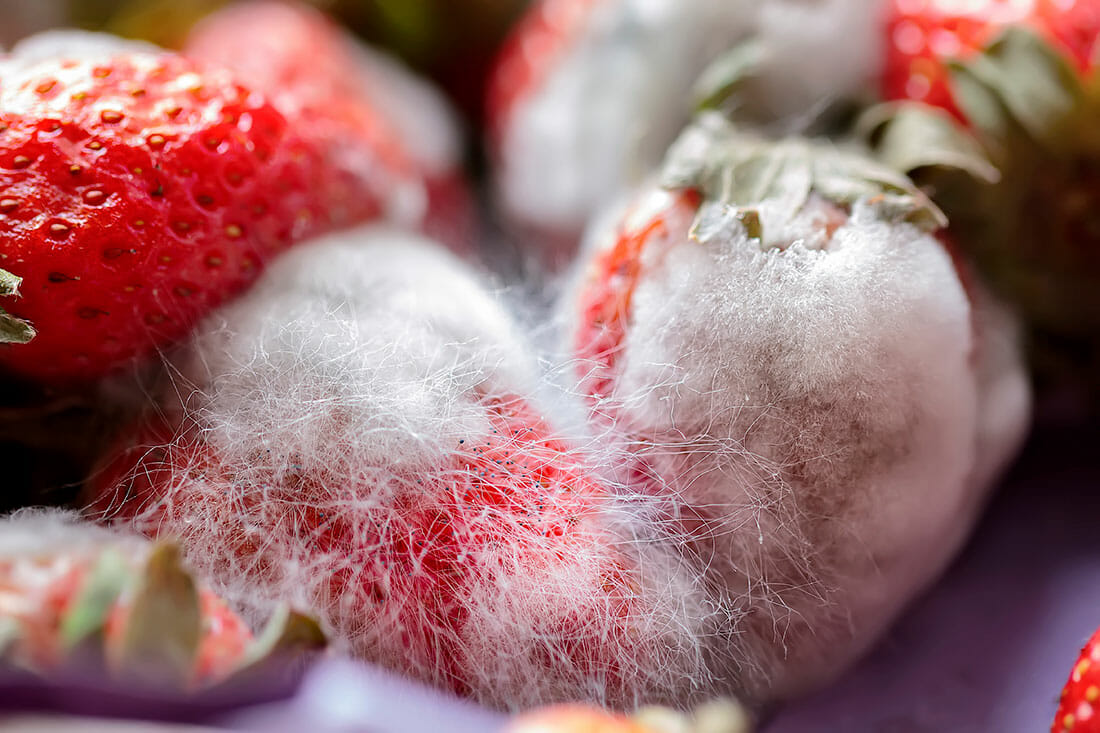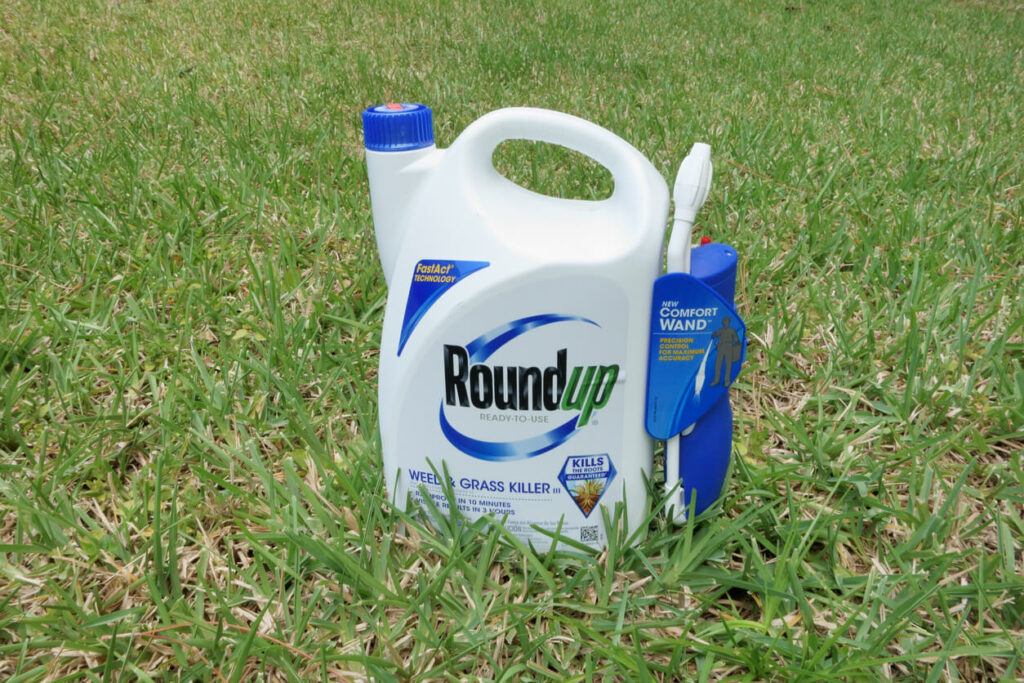
Botrytis cinerea, also known as grey mold, is generally not dangerous to humans but it could cause a respiratory allergic reaction in some. The allergic reaction is also referred to as ‘winegrower’s lung’ which is a type of hypersensitivity pneumonitis.
This type of mold is most common plants and many different kinds of plants can become affected. It prefers soft plant tissue which makes flowering plants and bushes or trees with fruit more susceptible.
Have you spotted an ashy grey mold on your houseplant or fruit and wondering what to do about it? This is everything you need to know about botrytis and what you can do about it.
What Is Botrytis Cinerea?
Botrytis cinerea is a fungus commonly found on soft plant tissue. There are over 30 different species, each with their own preferred plant species as a host.
Botrytis Cinerea is also known as:
- Grey mold
- botrytis Semillon (in grapes)
- botrytis bunch rot
- Noble rot
- Ash mold
- Ghost spot
- botrytis blight
Damaged plants in damp areas are most at risk of this fungus. Once the spores are on the damaged plant tissue, it quickly spreads to the rest of the plant and kills it.
Once the infection has reached an advanced stage, the spores can spread through the air and through water. For example, a breeze or rain can carry the spores to other plants.
How to Recognize Botrytis
As its common name suggest, botrytis looks like a grey mold but it presents itself different at different stages. This is how you can recognize botrytis on your plants.
Early Signs of botrytis: whitish water-soaked spots, browning wilting leaves
Advanced Signs of botrytis: brown leaves, grey fuzzy mold anywhere on the plant, grey wilted flowers, black spots on fruit, rotting

Causes of Botrytis
Botrytis occurs on damaged plants in damp conditions. For example, a bruised fruit or a lesion on leaf in a humid space.
It is also more likely to occur in relatively cool temperatures between 59°F – 73°F, which is around the average room temperature. However, far higher temperatures of 80°F or higher makes the spread of this fungus much less likely.
Effects of Botrytis on Humans and Pets
Although botrytis looks awful, it is only harmful to its plant host. Humans and pets are highly unlikely to suffer any effects with one exception.
Botrytis Effects on Humans
Exposure to botrytis cinerea is only dangerous to persons with pre-existing lung conditions or allergies. Breathing in or touching the spores can lead to a mild to severe allergic reaction.
There is one specific type of allergic reaction, a very rare one, that is of some concern. This particular kind of allergic reaction is hypersensitivity pneumonitis, also known as winegrower’s lung or farmer’s lung.
In this case, exposure to botrytis cinerea causes inflammation in the lungs which could leave lasting damage. It requires immediate treatment to avoid lung scarring.
Botrytis Effects on Pets
There are no known harmful effects of botrytis cinerea on animals. Still, it is a good idea to not let your pets eat any plants or fruit affected by grey mold.
How Do I Get Rid of Botrytis?
Getting rid of botrytis is more difficult than preventing it. First make sure you are not creating preferable conditions for grey mold as suggested below. If you do spot signs of botrytis, try these possible solutions.
How to Prevent Botrytis in Houseplants
1. Keep Houseplants Out of Humid Conditions
Botrytis develops the fastest in cool humid conditions so keep your rooms dry enough for the houseplants.
2. Keep It Warm
Make sure your houseplants get enough sunlight and warmth. Temperatures above 80°F slow down the spread of botrytis blight and temperatures above 90°F stop it from spreading completely.
3. Prune Damaged Plant Tissue
Damaged fruit or a lesion is where botrytis strikes. Get rid of damaged tissues before it gets a chance to.
4. Keep Plants Clean and Dry
Although plants need moisture in their soil, the rest of the plant does not need to be wet. Keep your leaves, flowers and stems dry and wipe them down every once in a while.
5. Remove Dead Leaves
Eventually, plant matter starts to decay and you should get rid of it before it does. Remove dead leaves and place them in compost, instead.
6. Isolate New Plants
Botrytis is more likely to occur in outdoor plants. Keep new plants that you brought in from the garden or garden center in isolation to monitor for signs of disease.
How to Stop Botrytis Cinerea in Houseplants
1. Clean the Plant
Cleaning the affected plant will help stop the spread of spores. Clean the entire plant, not just the affected area.
2. Remove the Affected Area
If it’s a fruit or flower or leaf, it is easier to remove the infected area. Carefully go at it with the pruning shears and make sure you remove every trace of it. Don’t forget to disinfect your shears afterwards.
3. Burn Affected Plants and Debris
It may seem extreme, but burning affected plants is the best way to ensure it does not spread. After all, the spores can carry in the air or water.
Frequently Asked Questions:
Can Botrytis Be Cured?
Yes, plants affected by botrytis cinerea can be cured if treated on time. The affected areas need to be removed and burned while the rest of the healthy plant should be properly cleaned.
How Do You Get Rid of Botrytis Blight on Roses?
Getting rid of botrytis, or grey mold, on roses goes the same as on any other plant. Remove the affected flowers or leaves, burn them and clean the rest of the unaffected areas.
You can prevent botrytis blight on roses by making sure they stay dry, besides the roots themselves, providing good air circulation, monitoring for damaged plant tissue and keeping the roses clean.
Is Grey Mold Harmful?
Grey mold is very harmful on plants, it is is fungal disease that easily spreads throughout the plant itself and to plants in it surrounding. Grey mold must be dealt with as quickly as possible to be able to save the plant.
Summary
Botrytis cinerea, or grey mold, is a harmful fungal infection that mostly affects damaged plants. If left untreated, the entire plant could die and the spores can spread to other plants nearby.
With the exception of winegrower’s lung, grey mold is not harmful to humans. Unless there is an allergic reaction to the spores, a person can safely treat plants that have been infected with botrytis cinerea.


